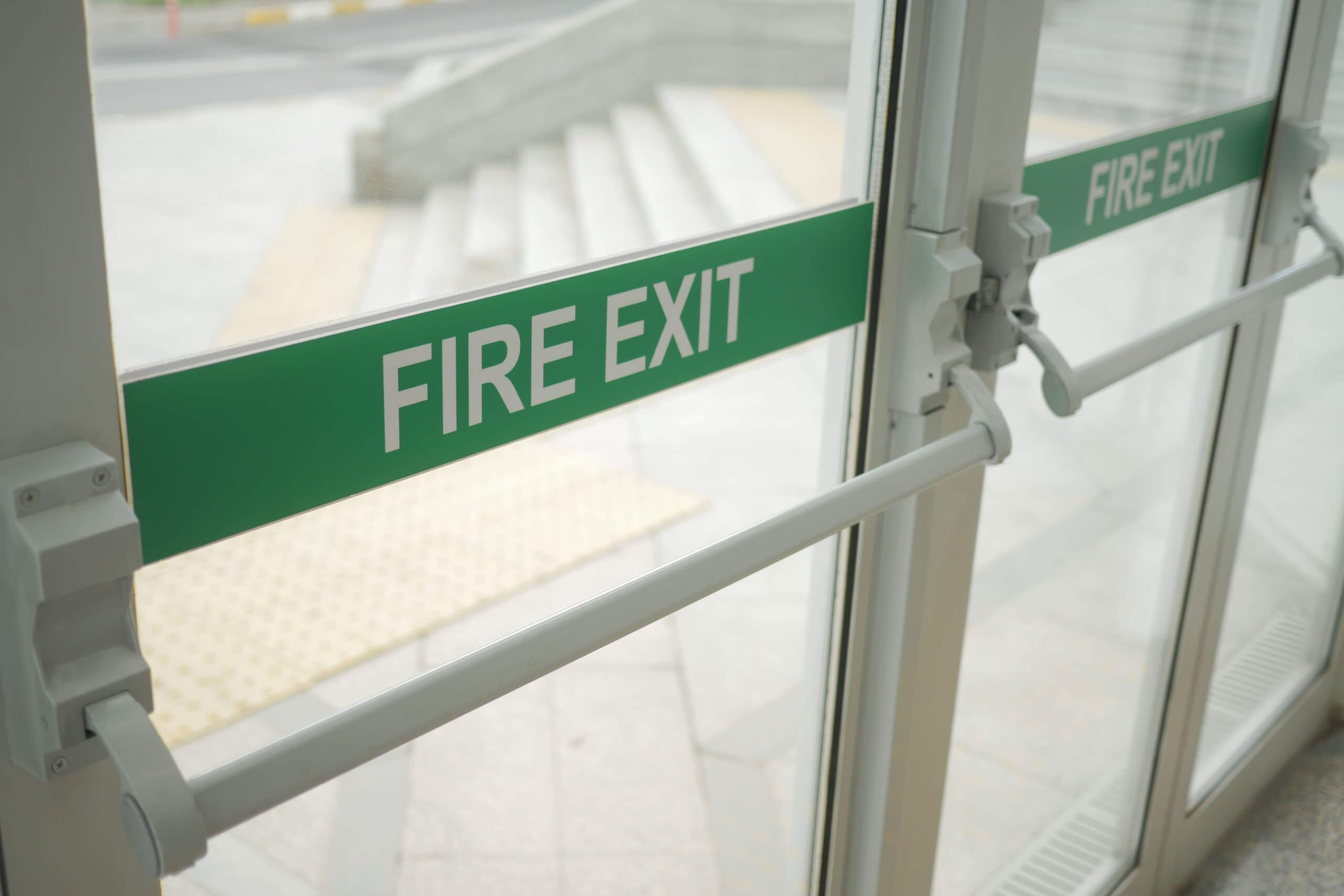Size and usage can make a difference to the number of fire exits a building requires. But a fire exit is far more than just a door – and creating a fire safety strategy can help businesses prepare for any scenario.

Size and usage can make a difference to the number of fire exits a building requires. But a fire exit is far more than just a door – and creating a fire safety strategy can help businesses prepare for any scenario.

Government guidelines don’t state the number fire exits required for businesses, but fire safety regulations do give best practice and minimum requirements for business owners to follow.
If possible, more than one fire exit is recommended. All fire exit doors need to be completely independent of each other, with distinct escape routes that provide multiple opportunities to evacuate the building.
In any building, the distance to a fire exit needs to be as short as possible. In a structure with multiple fire exits, nobody should be more than 60 metres away from a fire exit. If your business premises is used for industrial work that has a high risk of fire, that maximum distance drops to 25 metres.
It’s not always going to be possible to provide more than one fire exit; for instance in small buildings or irregular heritage structures. In these scenarios, the guidance says that there should be no point more than 25 metres away from the main fire exit – but if your industry is at high risk from fire, the maximum distance is cut to 12 metres.
The route to the fire exit is as important as the door itself. Without a protected means of escape, accessing a fire exit could become impossible if fire encroached on the escape route.
With safe routes leading to fire escapes, the chances of surviving in an emergency are drastically improved. We’re not just talking about keeping corridors clear of obstructions, here; a protected means of escape needs to be shielded from fire and smoke, ventilated, lit and clearly signposted.
Without a properly signposted protected means of escape, people become trapped. Panic during an emergency can cause otherwise rational and logical people to make terrible survival choices. But creating a route, especially in large open-plan settings, can be a challenge.
Fire curtains can be used to protect a means of escape, which could prevent the catastrophic loss of life and even reduce structural damage, business downtime and financial losses.
A protected means of escape needs to be part of your fire strategy, whether your premises is a purpose-built facility or a repurposed building. In most cases, your local authority can provide specific information on regulations for building types and businesses – but in some cases, a special consultant may be required.
At Coopers Fire, we help organisations around the world meet and exceed their fire safety goals – with decades of experience in our field.
Protecting buildings and those in them from fire and smoke is our mission at Coopers Fire. We design and manufacture life-saving fire curtains for a huge range of industries and building types.
Our expertise has led us to become a world leader in fire safety. For more information on our non-intrusive, life-saving fire and smoke protection, or our educational training courses, call us on 02392 454 405 or email info@coopersfire.com.